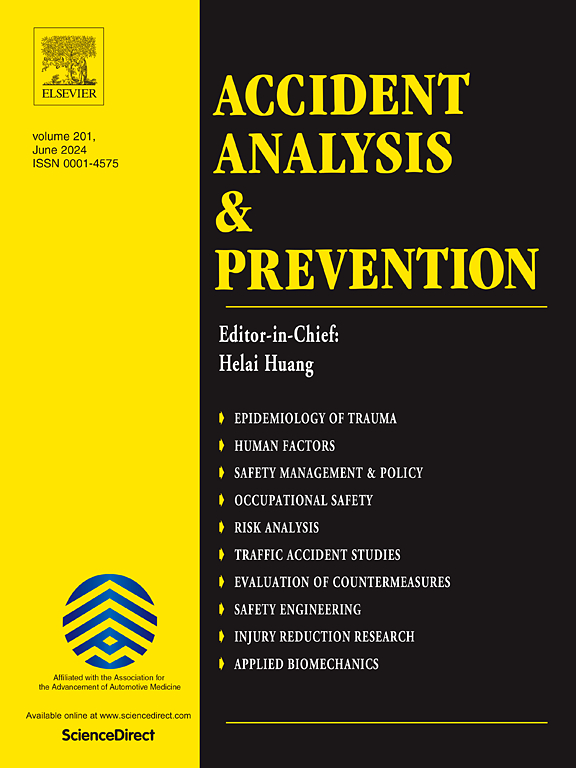模拟环境中危险标注和眼动追踪的人工智能自动化解决方案
IF 5.7
1区 工程技术
Q1 ERGONOMICS
引用次数: 0
摘要
高保真模拟器和传感器通常用于研究创造沉浸式环境来研究现实世界的问题。此设置记录详细数据,生成大型数据集。在驾驶研究中,一个全尺寸的汽车模型被重新用作驾驶模拟器,使人类受试者能够驾驭现实的驾驶场景。这些实验的数据是以原始形式收集的,需要大量的手工标注道路元素,如危险和干扰。这个过程通常是耗时的,劳动密集的,重复的,导致研究进展的延迟。本文提出了一种人工智能驱动的解决方案来自动化这些任务,使研究人员能够专注于分析并有效地推进他们的研究。该解决方案建立在先前驾驶行为研究的基础上,使用了配备视线跟踪摄像头的高保真全驾驶室模拟器。它扩展了Pawar(2021)“使用深度学习的驾驶模拟中的危险检测”中描述的早期系统的功能,该系统仅执行危险检测。增强的系统现在集成了危险注释和注视跟踪数据。该方法通过将车辆操纵参数与驾驶员视觉注意力数据相结合,提供了不同模拟场景下参与者驾驶行为的统一、详细视图。这种方法简化了数据分析,加快了研究时间线,并增强了对驾驶行为的理解。本文章由计算机程序翻译,如有差异,请以英文原文为准。
Artificial intelligence automated solution for hazard annotation and eye tracking in a simulated environment
High-fidelity simulators and sensors are commonly used in research to create immersive environments for studying real-world problems. This setup records detailed data, generating large datasets. In driving research, a full-scale car model repurposed as a driving simulator allows human subjects to navigate realistic driving scenarios. Data from these experiments are collected in raw form, requiring extensive manual annotation of roadway elements such as hazards and distractions. This process is often time-consuming, labor-intensive, and repetitive, causing delays in research progress.
This paper proposes an AI-driven solution to automate these tasks, enabling researchers to focus on analysis and advance their studies efficiently. The solution builds on previous driving behavior research using a high-fidelity full-cab simulator equipped with gaze-tracking cameras. It extends the capabilities of the earlier system described in Pawar’s (2021) “Hazard Detection in Driving Simulation using Deep Learning”, which performed only hazard detection. The enhanced system now integrates both hazard annotation and gaze-tracking data.
By combining vehicle handling parameters with drivers’ visual attention data, the proposed method provides a unified, detailed view of participants’ driving behavior across various simulated scenarios. This approach streamlines data analysis, accelerates research timelines, and enhances understanding of driving behavior.
求助全文
通过发布文献求助,成功后即可免费获取论文全文。
去求助
来源期刊

Accident; analysis and prevention
Multiple-
CiteScore
11.90
自引率
16.90%
发文量
264
审稿时长
48 days
期刊介绍:
Accident Analysis & Prevention provides wide coverage of the general areas relating to accidental injury and damage, including the pre-injury and immediate post-injury phases. Published papers deal with medical, legal, economic, educational, behavioral, theoretical or empirical aspects of transportation accidents, as well as with accidents at other sites. Selected topics within the scope of the Journal may include: studies of human, environmental and vehicular factors influencing the occurrence, type and severity of accidents and injury; the design, implementation and evaluation of countermeasures; biomechanics of impact and human tolerance limits to injury; modelling and statistical analysis of accident data; policy, planning and decision-making in safety.
 求助内容:
求助内容: 应助结果提醒方式:
应助结果提醒方式:


